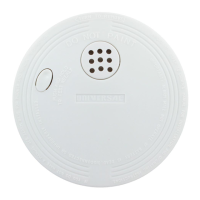
Do you have a question about the Universal Security Instruments SS-795 and is the answer not in the manual?
| Brand | Universal Security Instruments |
|---|---|
| Model | SS-795 |
| Category | Smoke Alarm |
| Language | English |
Compares ionization and photoelectric smoke detection technologies for reliability and response.
Covers limitations related to power, smoke detection, audibility, and potential for false alarms.
Emphasizes the unit's limited lifespan and the necessity for regular testing and maintenance.
Advises on placing alarms near sleeping areas, stairways, and on every floor for optimal protection.
Details ceiling and wall mounting distances from walls and ceilings as per guidelines.
Outlines NFPA requirements for existing and new construction homes and manufactured homes.
Provides guidance for sloped, tray-shaped ceilings and specific recommendations for mobile homes.
Lists specific areas to avoid for proper smoke alarm function, such as garages or high humidity zones.
Warns about the danger of electrical shock during installation and the need to turn off power.
Explains the function of the tamper pin for deterring unauthorized removal of the alarm.
Details the proper connections for AC power (black, white) and interconnect (yellow) wires.
Explains how interconnected alarms provide earlier warning and lists compatible models.
Illustrates the wiring setup for connecting multiple smoke alarm units for enhanced detection.
Describes the unit's standby, local alarm, and remote alarm conditions indicated by LEDs and sound.
Provides instructions for testing the alarm via the built-in switch and using the silence feature.
Guides on cleaning the unit and replacing the 9-volt backup battery with recommended types.
Offers steps for creating and practicing a home fire escape plan, including meeting points.
Provides critical actions to take, such as immediate evacuation and contacting the fire department.
Details National Fire Protection Association (NFPA) Standard 72 requirements for smoke detection.
Outlines the five-year warranty, what it covers, and common exclusions like misuse or improper installation.
Details the process for returning a defective product for repair or replacement, including costs.
